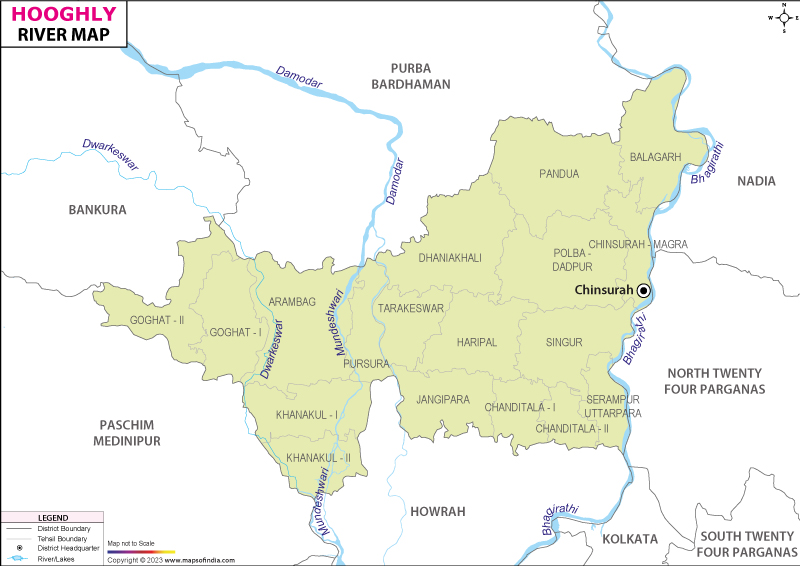Doi Ghat Redevelopment Along Hooghly River | 21 Jul 2025
Why in News?
Syama Prasad Mookerjee Port (SMP), Kolkata, and TNS Logi-Park Pvt. Ltd. signed a Memorandum of Understanding (MoU) to redevelop the historic Doi (Dahi) Ghat under a Corporate Social Responsibility (CSR) initiative, aiming to restore its cultural and economic legacy.
- The Doi Ghat project aligns with SMP’s broader initiative to develop and beautify the Hooghly riverfront for cultural revival and tourism.
Key Points
- Historical and Cultural Significance of Doi Ghat:
- Located at the confluence of Adi Ganga and the Hooghly River, opposite Howrah.
- The name "Doi Ghat" is derived from the Bengali word doi (curd), due to its historic link to the dairy trade from Howrah.
- It was a vital riverine trade and cultural exchange point between rural Bengal and colonial Calcutta.
- Significance of the MoU:
- Urban Heritage Conservation: Revives a forgotten socio-cultural landmark.
- Public-Private Partnership (PPP): Demonstrates successful collaboration for social development.
- Tourism and Community Engagement: Adds to riverfront aesthetics and fosters cultural pride.
- Sustainable Development: Integrates heritage, environment, and infrastructure goals.
- Alignment with Clean Ganga Mission: Supports the broader national objective of restoring sacred rivers.
- About Adi Ganga:
- Known historically as Gobindapur Creek, Surman’s Canal, and Tolly’s Canal.
- Served as the main course of the Hooghly River between the 15th and 17th centuries before silting and diversion.
- Currently a polluted urban water body; efforts are underway for its revival and rejuvenation, including:
- National Mission for Clean Ganga (NMCG) has sanctioned ₹650 crore.
- Adi Ganga included in a multi-country South Asian river pollution combat project.
- Hooghly River:
- A 260 km distributary of the Ganga originating from Murshidabad.
- Formed when the Ganga splits into Padma (towards Bangladesh) and Hooghly (towards West Bengal).
- Known also as Bhagirathi-Hooghly or Kati-Ganga.
- Crucial for port trade, transport, cultural life, and religious activities in Bengal.

